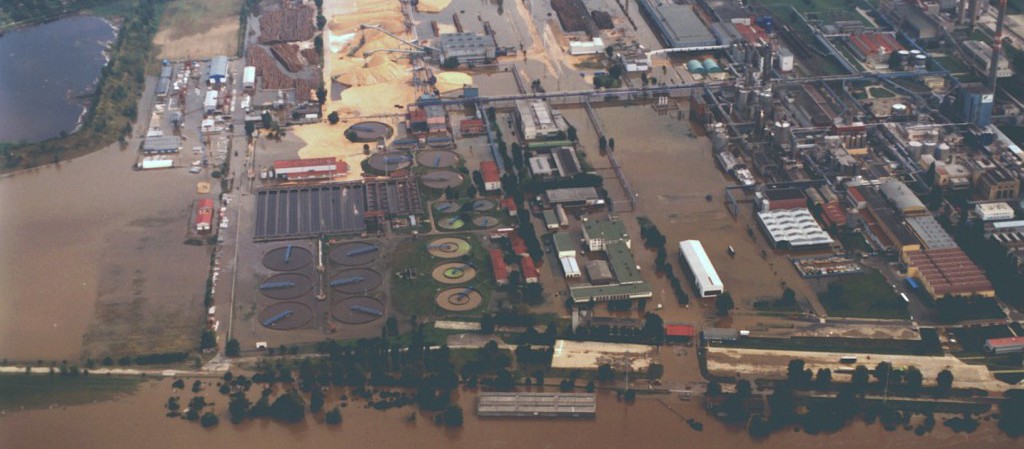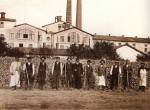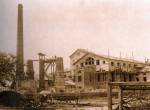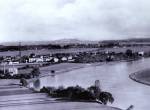
The educational journey of the robber Stetka
A nature trail around the surroundings of Štětí for the whole family, introducing the history and picturesque nature, industry and agriculture of Štetsko. The legendary robber Štětka and his four-member team are guiding the tour, giving information on a marked circuit starting from
In the old days of the Thirty Years' War, the robber Štětka was the master of the deep forests, fields and hillsides around the town of Štětí. Today, his home is the former Mordloch Cave, hidden away from people in the middle of the Stračen forests. Who knows him in the region. He protects the poor and honest, and justly punishes dishonesty and avarice. He has walked this land many times. He knows every road and footpath here.
During your adventurous journey with the robber Stetka you will come across educational boards that will tell you all about the history, nature, fauna and flora, industry and agriculture of the local region or visit the mythical cave Mordloch of the robber Stetka. You can also try out a discovery competition Following the footsteps of the robbers or robber geocaching.
Stops

Štětí, above the paper mill
INDUSTRY IN THE STETTIN REGION
Sugar Factory
The sugar factory was put into operation on 13 January 1871. In 1887 the sugar factory was effectively privatised. The new owners modernized the technological equipment and built a railway from the Štětí station to the sugar factory. In the interwar period, the sugar factory employed around 40 workers on a permanent basis. After 1939, the Nazis took the sugar factory away from the families of the Jewish partners and arized it. However, the processing of sugar beet continued here through the Second World War until 1948, when production stopped after 77 years. The sugar factory was then acquired by the paper mill in Česká Kamenice, which began to convert it into a cardboard factory in 1949. The subsequent operator of the paperboard mill was first the national enterprise PAPÍRNY ŠTĚTÍ, established on 30 June 1949.
Tannery - leather factory
House No. 113 on the bank of the Elbe was built by the German-Jewish company Rudolf Heller and Son in 1920. The production facility and the adjacent area of houses No. 115, 116 and 117 served both leather production and employee accommodation. In the courtyard there was a boiler house with a tall chimney, a well and tannery tanks, in the halls cattle hides were processed and hung. Before the end of the war in April 1945, during an Allied air raid on the Hněvická petrol refinery, several bombs fell into the Elbe River in front of the tannery and the pressure wave broke all the windows not only in the tannery but also in the nearby houses. After the Second World War the nationalised enterprise did not prosper, so production ended in 1949. In 1950, the building was inherited by the newly founded national enterprise Papírny Štětí. For the accommodation needs of the paper mill it was converted into a residential building with 20 residential units by 1953.
Paper mill
The life of the town and its surroundings has been inextricably linked with the local paper mill for half a century and therefore the history of Štětí could be divided into two asymmetrical chapters: before and after the mill. The idea of building a paper mill in the local area was conceived as early as 1946, culminating in the decree of the then Ministry of Industry of 30 June 1949, which established the national enterprise Papírny Štětí. In the early years, the Štětí Paper Mills set about converting the sugar mill into the now defunct cardboard mill. A reinforced concrete hall of the cardboard factory was added to the abandoned sugar factory buildings. Grey machine-made cardboard was then produced here continuously until 31 March 1998.
New plant - SEPAP
From the end of 1952, the implementation of an extensive programme of construction of the so-called "New Plant" began. At that time, the existing core of the Combine was built on the "green field" next to the former sugar factory site: wood storage, pulp mill, paper mill, bagging plant, waterworks, evaporation and caustification, power and maintenance workshops. This included, of course, an administration building, laboratories, a health centre, canteen and garages, internal roads and sidings and a pre-plant area with a car park. Only the connection of the siding to the railway at the Štětí station remained for several years in the form in which it was built around 1889 by the owners of the former sugar factory. The original name of the company was changed to the national enterprise SEVEROCESKÉ PAPÍRNY (SEPAP n.p.) ŠTĚTÍ on 15 March 1958. In 1957, the first automatic lines for the production of paper bags were tested. Since 1960, construction on the premises of the paper mill continued with the construction of a set of paper machines for the production of newsprint, called ROTOSTROJ. For 26 years, until 1989, rotary paper from Štětí was almost a monopoly raw material for newspaper printers in Bohemia and Moravia.
Szczecin II
In 1967-197, the construction called ŠTĚTÍ II took place. This billion-dollar investment concentrated an impressive capacity for that time. At that time, builders literally dug up not only the paper mill site, but also a significant part of the city. Since then, almost all of Štětí has been heated and supplied with hot water from a central heat source in the paper mill. A GRAPHIC PAPERS plant was also built on the premises of the paper mill, where mainly price papers are produced. At the same time, a new dragging of the paper mill over the new bridge over the Elbe River was carried out by connecting to the left bank railway at the Hněvický railway station. A major turning point in the development of the paper mill and its organisational structure occurred after 1989 and in the following twenty years, which represented a period of economic transformation and adaptation to the conditions of the market economy for the entire country. Even before the change of political regime in November, the status of the paper mill changed from a national enterprise to a 'state enterprise' on 1 July 1989 and then to a joint-stock company, Sepap, on 1 May 1992.
Owners of paper mills in Štětí
Further changes came for Sepap in 1995 when the Swedish company ASSI DOMÄN entered the paper mill. The strategic interest of the new company in Štětí was focused only on the production of packaging bags and environmentally friendly pulp, bleached without chlorine.
In 2000, the owner of the paper mill became the multinational Austrian company Frantschach pulp & paper, a.s., which bought it from the Swedish company Assi Domän for about CZK 20 billion. This was a period of significant restructuring of the entire company, which now focuses on four main products instead of the original extensive production programme: pulp - sack paper - liners (covering layer for corrugated board) - MG paper (wrapping paper).
On 16 October 2003, the Štětský kombinat was renamed to the name of the real owner MONDI PACKAGING ŠTĚTÍ a.s. In the spring of 2008 the Norwegian company Norske Skog Štětí a.s. stopped the production of newsprint after 47 years.
Nowadays, just over 600 employees work at the paper mill in Štětská, up from 3,000 before the war. However, the favourable economic results have for many years placed the local plant among the 100 most successful companies in the Czech Republic.




